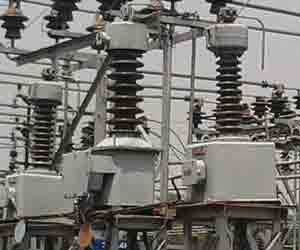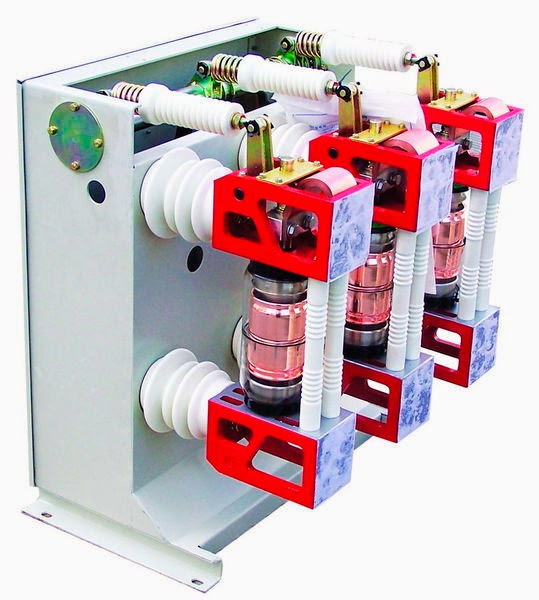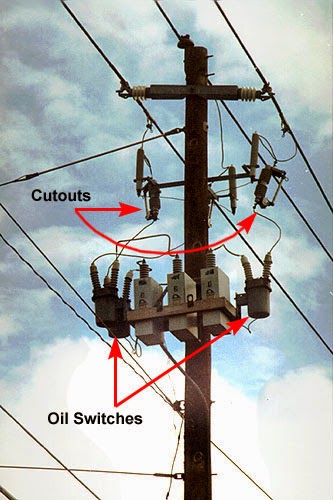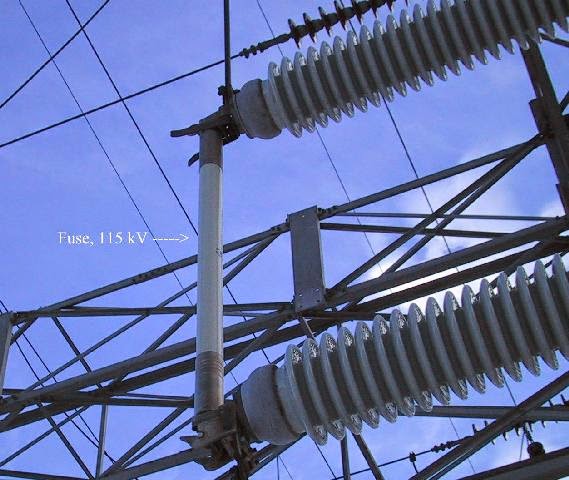Light traveling in
an optical fiber loses power over distance. The loss of power depends on the
wavelength of the light and on the propagating material. For silica glass, the
shorter wavelengths are attenuated the most. The lowest loss occurs at the 1550-nm
wavelength, which is commonly used for long-distance transmissions.
Transmission of
light by fiber optics is not 100% efficient. There are several reasons for this
including absorption by the core and cladding (caused by the presence of
impurities) and the leaking of light from of the cladding. When light reflects
off the cladding /core interface it actually travels for a short distance
within the cladding before being reflected back. This leads to attenuation
(signal reduction) by up to 2db/Km for a multi-mode fiber. For example, with
this level of attenuation, if light travelled over 10kM of cable only 10% of
the signal would arrive at the following end.
The loss of power in light in an optical
fiber is measured in decibels (dB). Fiber optic cable specifications express
cable loss as attenuation per 1-km length as dB/km. This value is multiplied by
the total length of the optical fiber in kilometers to determine the fiber's
total loss in dB.
Optical fiber link loss is caused by a number
of factors
- Modal and chromatic dispersion
- Connector
- Splice
- Fiber attenuation
Modal
and chromatic dispersion
Modal Dispersion
Modal
Dispersion is the distortion in fiber or waveguide. Signal is spread due to
different propagation velocity of optical signal in different mode.
Intermodal
dispersion (also called modal dispersion) is the phenomenon that the group
velocity of light propagating in a multimode fiber (or other waveguide) depends
not only on the optical frequency (chromatic dispersion) but also on the
propagation mode involved.
Intermodal
dispersion results from different propagation characteristics of higher-order
transverse modes in waveguides, such as multimode fibers. This effect can
severely limit the possible data rate of a system for optical fiber
communications based on multimode fibers.
 |
| Intermodal |
Intermodal
dispersion (also called modal dispersion) is the phenomenon that the group
velocity of light propagating in a multimode fiber (or other waveguide) depends
not only on the optical frequency (chromatic dispersion) but also on the
propagation mode involved.
Chromatic Dispersion
Chromatic
dispersion (or material dispersion) is produced when different frequencies of
light propagate in fiber with different velocities. Chromatic dispersion is
larger for the wider source bandwidth. Thus it is largest for LEDs and smallest
for LASERs. LED BW is about 5% of λ0, Laser BW about 0.1 % or below
of λ0.
In
addition to chromatic dispersion, there exists also waveguide dispersion that
is significant for single mode fibers in longer wavelengths. Chromatic and waveguide dispersion are
denoted as Intra- modal dispersion and their effects cancel each other at a
certain wavelength. Total dispersion is determined as the geometric sum of
intra-modal and inter-modal (or mode) dispersion with the net pulse spreading.
 |
Chromatic
and wave-guide dispersion cancel each other at certain wavelength
|
Total Dispersion
Total dispersion is determined as the geometric sum
of intra-modal and inter-modal (or mode) dispersion with the net pulse
spreading:
Splice
Splice
loss occurs at all splice locations. Mechanical splices usually have the
highest loss, commonly ranging from 0.2 to over 1.0 dB, depending on the type
of splice. Fusion splices have lower losses, usually less than 0.1 dB. A loss
of 0.05 dB or less is usually achieved with good equipment and an experienced
splicing crew. High loss can be attributed to a number of factors, including:
- Poor cleave
- Misalignment of fiber cores
- An air gap
- Contamination
- Index-of-refraction mismatch
- Core diameter mismatch to name just a few.
Connector
Losses
at fiber optic connectors commonly range from 0.25 to over 1.5 dB and depend
greatly on the type of connector used. Other factors that contribute to the
connection loss include:
- Dirt or contaminants on the connector (very common)
- Improper connector installation
- A damaged connector face
- Poor scribe (cleave)
- Mismatched fiber cores
- Misaligned fiber cores
- Index-of-refraction mismatch
Fiber Attenuation
Attenuation
means loss of light energy as the light pulse travels from one end of the cable
to the other. It is also called as signal loss or fiber loss. It also decides
the number of repeaters required between transmitter and receiver. Attenuation
is directly proportional to the length of the cable.
Attenuation
is defined as the ratio of optical output power to the input power in the fiber
of length L.
α= 10log10 Pi/Po [dB/km]
Where, Pi= Input Power
Po= Output Power, α is attenuation constant
 |
Fiber
Attenuation
|
The various losses in the cable are due to
- Bending
- Absorption
- Scattering
Bending Loss
Bend
loss occurs at fiber cable bends that are tighter than the cable's minimum bend
radius. Bending loss can also occur on a smaller scale from such factors as:
- Sharp curves of the fiber core
- Displacements of a few millimeters or less, caused by buffer or jacket imperfections
- Poor installation practice
This
light power loss, called micro-bending, can add up to a significant amount over
a long distance. The loss which exists when an optical fiber undergoes bending
is called bending losses.
There are two types of bending:
Macroscopic
bending
Bending
in which complete fiber undergoes bends which causes certain modes not to be
reflected and therefore causes loss to the cladding. |
Macroscopic
bending
|
Microscopic
Bending
Either
the core or cladding undergoes slight bends at its surface. It causes light to
be reflected at angles when there is no further reflection. |
Microscopic
Bending
|
Absorption
In
the telecom region of the spectrum, caused primarily by excitation of chemical
bond vibrations. Overtone and combination bands predominate near 1550 nm. Low-energy
tail of electronic absorption dominate in visible region. Electronic absorption by color centers cause loss for some metal impurities.
There are two types of absorption:
- Intrinsic Absorption
- Extrinsic Absorption
Intrinsic
Absorption
- Caused by the interaction with one or more components of the glass
- Occurs when photon interacts with an electron in the valence band & excites it to a higher energy level near the UV region.
Extrinsic
Absorption
- Also called impurity absorption.
- Results from the presence of transition metal ions like iron, chromium, cobalt, copper & from OH ions i.e. from water.
Scattering
It occurs due to microscopic variations in the
material density, com-positional fluctuations, structural in homo geneities and
manufacturing defects.
Scattering are two types
- Linear Scattering
§ Rayleigh Scattering losses
§ Mie Scattering Losses
§ Wave-guide Scattering Losses
- Non-linear Scattering
§ Stimulated Brillouin Scattering(SBS)
§ Stimulated Raman Scattering(SRS)
Rayleigh scattering Losses
- These losses are due to microscopic variation in the material of the fiber.
- Unequal distribution of molecular densities or atomic densities leads to Rayleigh scattering losses
- Glass is made up of several acids like SiO2, P2O5, etc. compositions, fluctuations can occur because of these several oxides which rise to Rayleigh scattering losses.
Mie Scattering Losses
These losses results from the compositional
fluctuations & structural in homo generics & defects created during
fiber fabrications, causes the light to scatter outside the fiber.
Waveguide Scattering Losses
It is a result of variation in the core diameter,
imperfections of the core cladding interface, change in RI of either core or
cladding.
SBS Scattering:
- Stimulated Brillouin Scattering (SBS) may be regarded as the modulation of light through thermal molecular vibrations within the fiber.
- Pb = 4.4x10-3d2λ2α dB v watts
d= fiber core diameter (μm)
v = source bandwidth in (GHz)
SRS Scattering
- Stimulated Raman Scattering is similar to SBS except that high frequency optical phonon rather than acoustic phonon is generated in scattering processes.
- Pb = 5.9x10-2 d2λα dB watts























